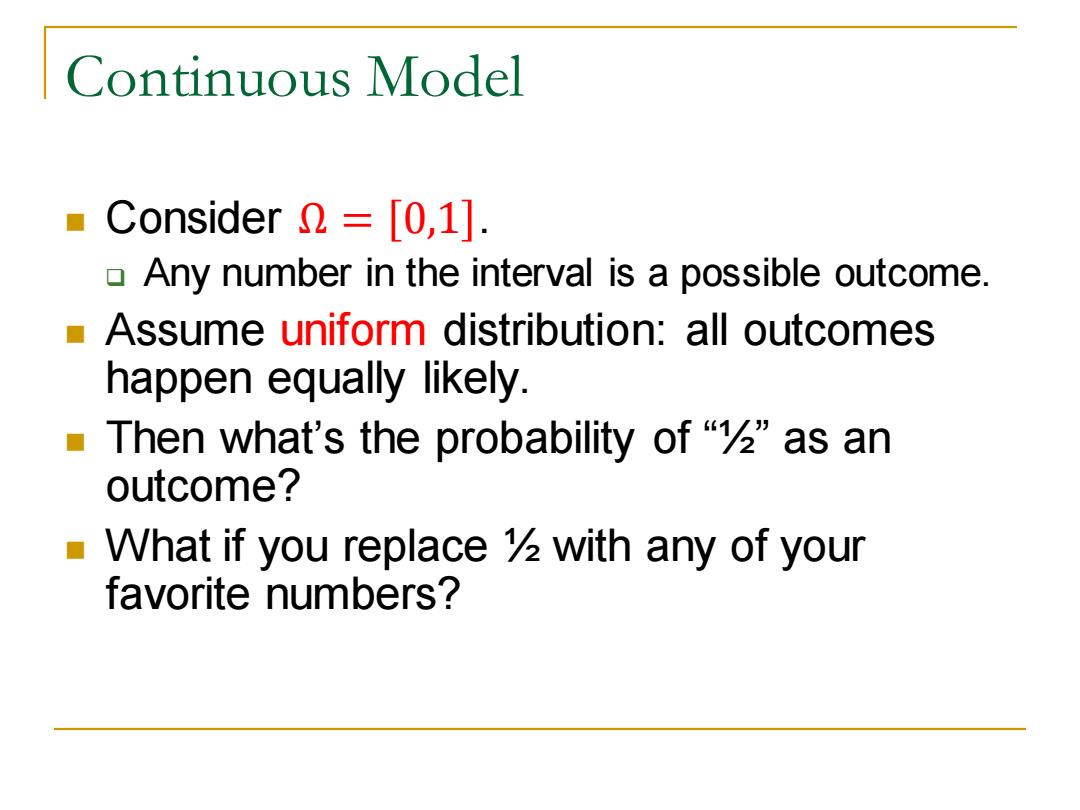
Continuous Model ■Consider2=[0,1]. Any number in the interval is a possible outcome. Assume uniform distribution:all outcomes happen equally likely. Then what's the probability of“½”asan outcome? ■ What if you replace with any of your favorite numbers?
Continuous Model ◼ Consider Ω = 0,1 . ❑ Any number in the interval is a possible outcome. ◼ Assume uniform distribution: all outcomes happen equally likely. ◼ Then what’s the probability of “½” as an outcome? ◼ What if you replace ½ with any of your favorite numbers?
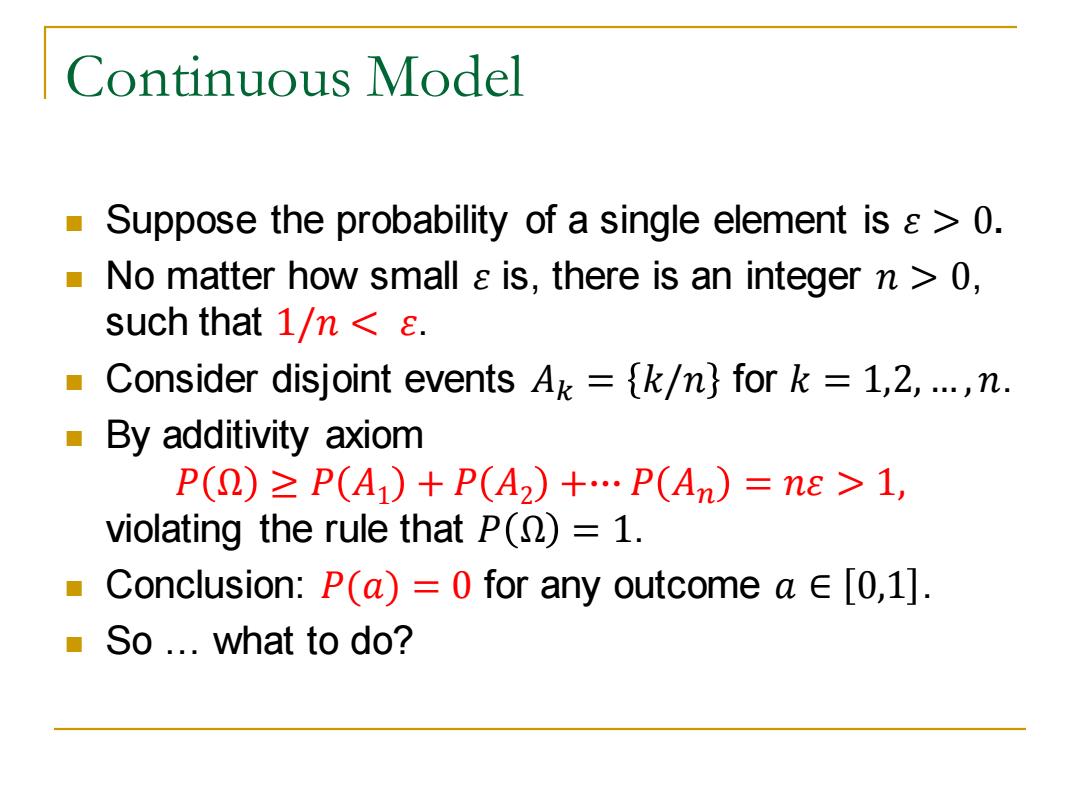
Continuous Model Suppose the probability of a single element is s 0. No matter how small s is,there is an integer n>0, such that 1/n<s. Consider disjoint events A=k/n}for k 1,2,...,n. By additivity axiom P(2)≥P(A)+P(A2)+…P(An)=ne>1, violating the rule that P()=1. Conclusion:P(a)=0 for any outcome a e 0,1]. So...what to do?
Continuous Model ◼ Suppose the probability of a single element is 𝜀 > 0. ◼ No matter how small 𝜀 is, there is an integer 𝑛 > 0, such that 1/𝑛 < 𝜀. ◼ Consider disjoint events 𝐴𝑘 = 𝑘/𝑛 for 𝑘 = 1,2, … ,𝑛. ◼ By additivity axiom 𝑃 Ω ≥ 𝑃 𝐴1 + 𝑃 𝐴2 +∙∙∙ 𝑃 𝐴𝑛 = 𝑛𝜀 > 1, violating the rule that 𝑃 Ω = 1. ◼ Conclusion: 𝑃(𝑎) = 0 for any outcome 𝑎 ∈ 0,1 . ◼ So … what to do?
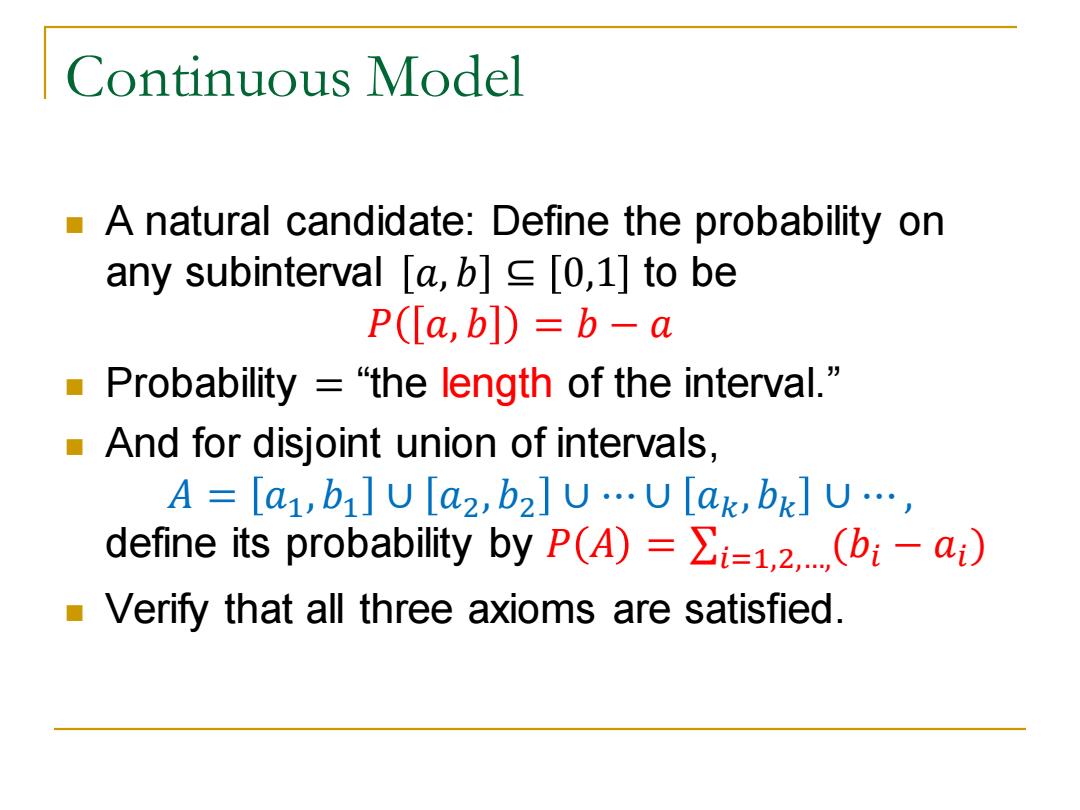
Continuous Model A natural candidate:Define the probability on any subinterval a,b]s0,1]to be P(a,bD)=b-a Probability ="the length of the interval." And for disjoint union of intervals, A=[a1,b1]U[a2,b2]U…U[ak,b]U…, define its probability by P(A)=i=1.2....(bi-ai) Verify that all three axioms are satisfied
Continuous Model ◼ A natural candidate: Define the probability on any subinterval 𝑎, 𝑏 ⊆ 0,1 to be 𝑃 𝑎, 𝑏 = 𝑏 − 𝑎 ◼ Probability = “the length of the interval.” ◼ And for disjoint union of intervals, 𝐴 = 𝑎1 , 𝑏1 ∪ 𝑎2 , 𝑏2 ∪ ⋯ ∪ 𝑎𝑘, 𝑏𝑘 ∪ ⋯ , define its probability by 𝑃 𝐴 = σ𝑖=1,2,…, (𝑏𝑖 − 𝑎𝑖 ) ◼ Verify that all three axioms are satisfied
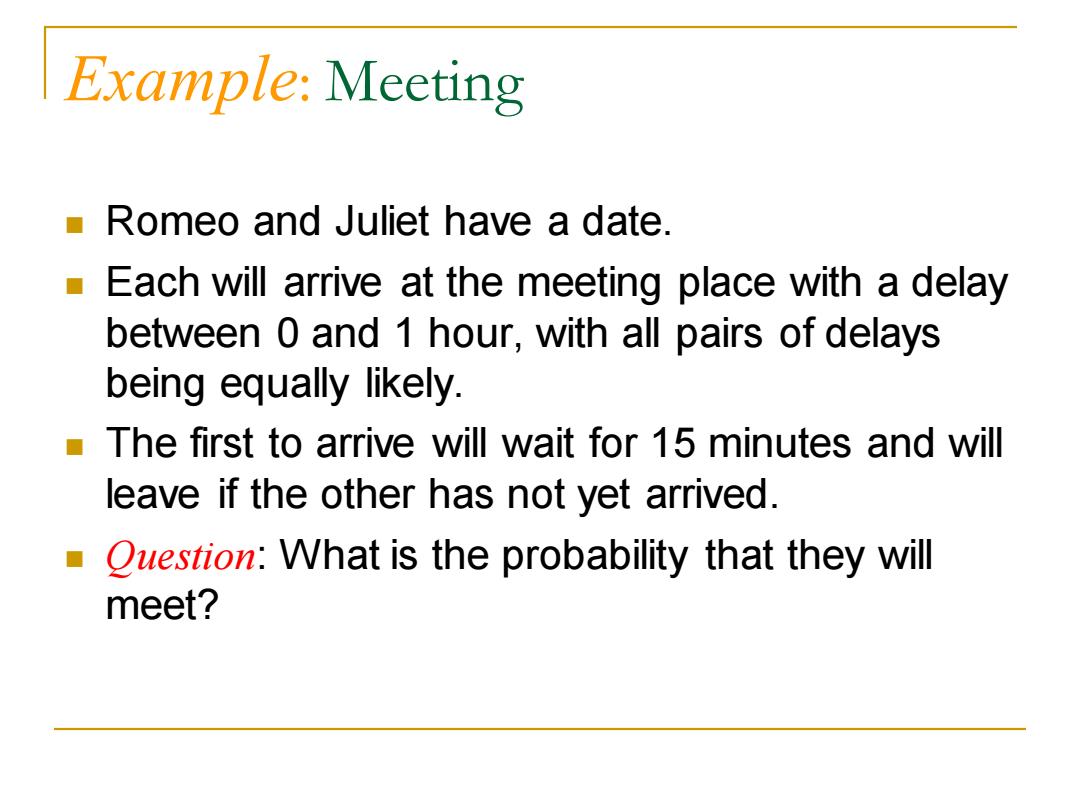
Example:Meeting Romeo and Juliet have a date. Each will arrive at the meeting place with a delay between 0 and 1 hour,with all pairs of delays being equally likely. The first to arrive will wait for 15 minutes and will leave if the other has not yet arrived. Ouestion:What is the probability that they will meet?
Example: Meeting ◼ Romeo and Juliet have a date. ◼ Each will arrive at the meeting place with a delay between 0 and 1 hour, with all pairs of delays being equally likely. ◼ The first to arrive will wait for 15 minutes and will leave if the other has not yet arrived. ◼ Question: What is the probability that they will meet?
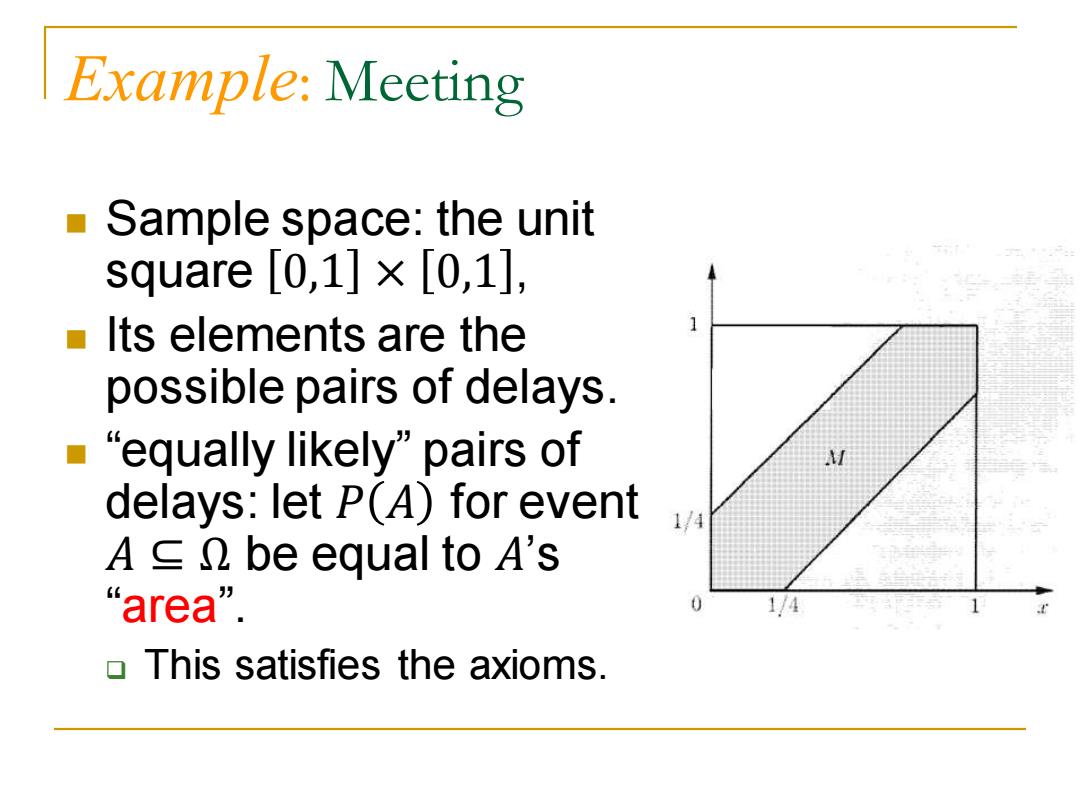
Example:Meeting Sample space:the unit square[0,1]×[0,1], Its elements are the possible pairs of delays. ■ “equally likely”pairs of delays:let P(A)for event 1/4 A sn be equal to A's “area”. 1/4 oThis satisfies the axioms
Example: Meeting ◼ Sample space: the unit square 0,1 × 0,1 , ◼ Its elements are the possible pairs of delays. ◼ “equally likely” pairs of delays: let 𝑃 𝐴 for event 𝐴 ⊆ Ω be equal to 𝐴’s “area”. ❑ This satisfies the axioms